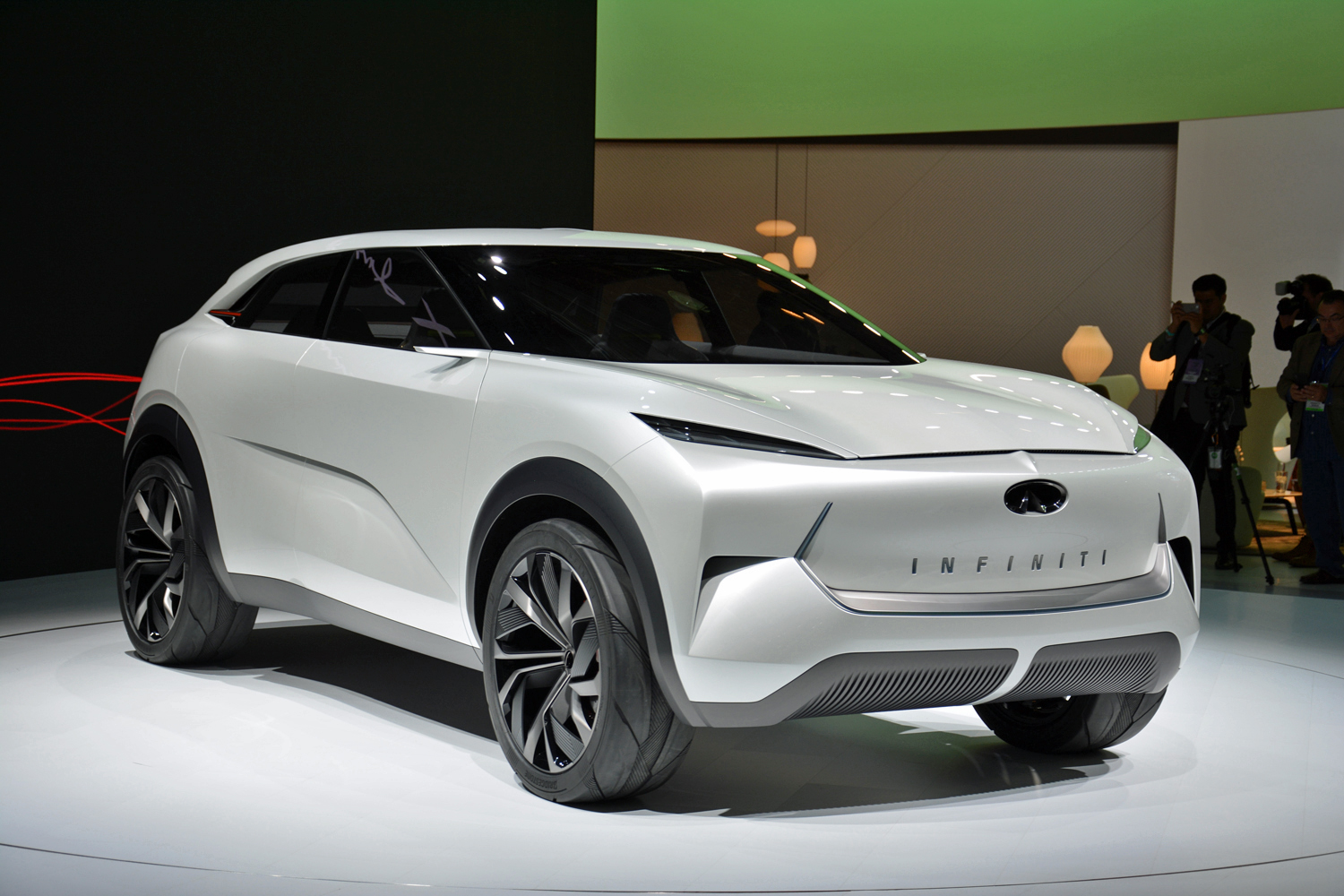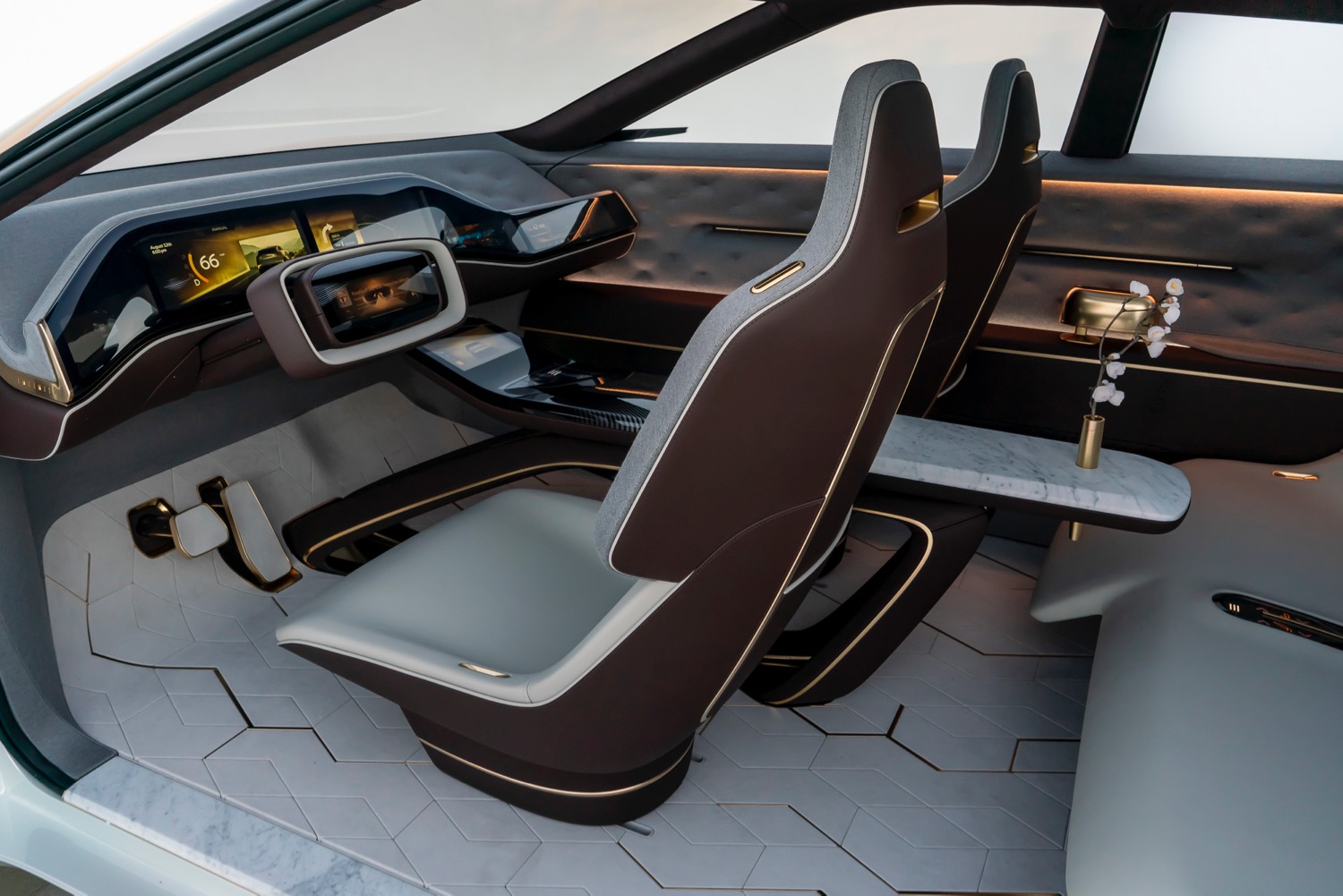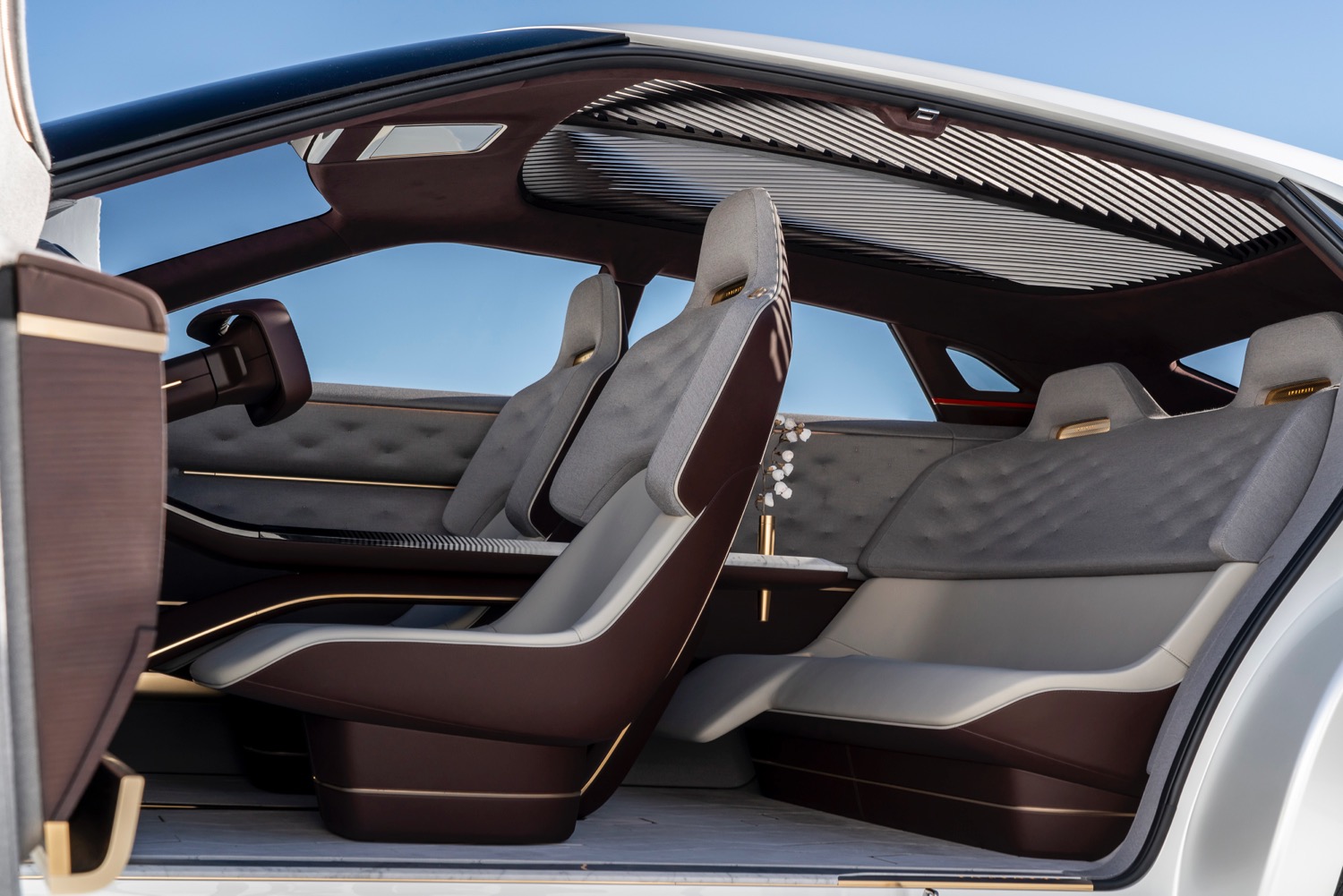The 2019 Detroit Auto Show will be one of the quietest in recent memory. That doesn’t mean there won’t be anything noteworthy to see at the Cobo Center, however. Nissan’s Infiniti division will reveal an electric crossover concept dubbed QX Inspiration during the annual Motor City shindig.
“The concept car we will show in Detroit is the beginning of a new era for Infiniti, and an illustration of where we want to go with the brand. Electrification and other technologies have given us the opportunity to evolve our design philosophy,” explained Karim Habib, the brand’s executive design director, in a statement.
The QX Inspiration bears a familial resemblance to other recent Infiniti concept cars and production models, but with some new elements. Because the crossover is electric, it has no need for a grille. So Infiniti decided to fill the space with a big illuminated badge and letters spelling out its brand name. It’s not the most subtle execution, but it could become more common as designers continue to play with this newly-available real estate on the front of electric cars.
Beyond that, the concept wears a fluid, crease-free design. It has cameras in lieu of mirrors, a futuristic feature that remains entirely illegal in the United States. Just ask Audi.
Technical specifications, like much else, are under wraps. We know the concept runs exclusively on electricity; there is not a gasoline-burning engine anywhere to be found. This decision falls in line with Infiniti’s decision to electrify its entire portfolio starting in 2021. We’ve heard rumors of an electric Infiniti based on the Nissan Leaf for years, ever since Infiniti unveiled the Leaf-based LE sedan concept at the 2012 New York Auto Show, but it’s unclear if the QX Inspiration has any relationship to that vehicle.
Infiniti calls the QX Inspiration a vision for its first fully electric crossover, which implies the design study will spawn a production model sooner or later.
The Infiniti stand at the Detroit show will look toward the future, but it will also celebrate the past. The firm made its global debut at the 1989 edition of the Detroit show, so it’s safe to assume it will dust off a handful of historic models to mark the milestone. Elsewhere on the show floor, Infiniti parent Nissan is displaying its own all-electric concept, the IMs.
Updated on January 14, 2019: Added photos.
Editors' Recommendations
- Lexus unveils its first electric car, but it’s unlikely to be sold in the U.S.
- Volkswagen found something fun to do with its Atlas Cross Sport family hauler
- Lincoln Corsair Grand Touring adds plug-in hybrid power
- Hyundai shocks us with its mid-engined RM19 sports car concept
- 2020 Audi E-Tron Sportback is all about style, but still has substance




















